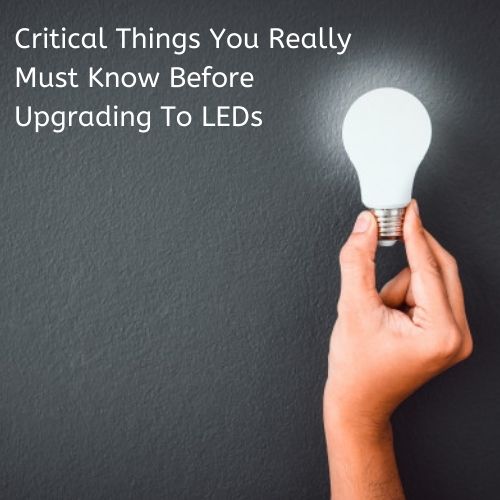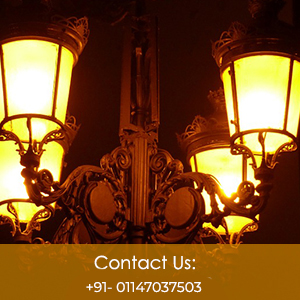Critical Things You Really Must Know Before Upgrading To LEDs
In the article we’ll be discussing a important topic that’s “Critical Things You Really Must Know Before Upgrading To LEDs” let’s talk about it in detail:
If you wish to save lots of money, save power, and enjoy years and years of fuss-free lighting, LEDs are definitely the way to go. Before you purchase LED bulbs for your home’s lighting, here are the Critical Things You Really Must Know Before Upgrading To LEDs:
Know Your Purchasing Options
Think the only way to actually upgrade to LED lighting is to fork over the cash? Think again.
Nowadays, there are 3 main options available in the market for your LED upgrade, which are:
1) Conventional Procurement
2) Financed or Leased Lighting
3) Light as a Service
Conventional Procurement is probably the 1st option that came to mind. This traditional method requires investing capital in the purchase of LED light fittings. You actually pay for the lights upfront, and they’re yours indefinitely. Moreover, you have full responsibility for their installation, which including project management and any extra expenses incurred, like height hire and the safe removal of the existing fittings. Your light levels will improve, you’ll reduce your energy consumption, and you will see pay back on the investment in 3 to 5 years. This choice is actually well suited to smaller lighting projects, where there are few lights to be replaced and also the business has the capital to pay upfront.
Financed or Leased Lighting actually requires a long term finance or lease agreement. The series of repayments makes it a more financially feasible option for businesses that don’t have the capital upfront, or would rather invest it in other areas of the business. As of January 2019, all leases (finance and operating) must be shown on the Balance Sheet of a company, meaning they will require more disclosure and reporting, and carry increased liability. (IFRS 16) This may actually impact your financial covenants as well as borrowing capacity, therefore it carries a degree of risk. Furthermore, management of the installation is often included, your light levels will improve a lot, you will reduce your energy consumption, and you will actually see pay back on the investment in about 3 to 5 years.
Of the three, Light as a Service (LaaS) is most likely the choice you’re least aware of. We provide you with a one-stop solution to your lighting requirements. Furthermore, it actually includes each and every aspect of a lighting upgrade from start to finish: capital investment, project management as well as guaranteed light levels for the duration of your agreement.
Generally confused with Leased or Financed Lighting, the primary distinction is its financial treatment. A Light as a Service Agreement is actually treated as an operating expense at the P&L level, which implies that it doesn’t affect your balance sheet and won’t really impact your financial covenants or borrowing capacity.
Zero capital expenditure is required, and also the all-inclusive service charge begins one month after the installation is complete. The installation is fully managed, your light levels are improved to industry-specific standards, you will reduce your energy consumption, and even the project will be net cash generative from the 1st month. This option is ideal for larger projects.
Know That You Get What You Pay For
It’s important to notice that not all LED upgrades are created equal.
Price shouldn’t really be the most important factor in your decision-making process; value should. Focusing solely on cost can actually result in a sub-standard project. A cheap, low quality product will lead to further problems in the long run.
If maintenance isn’t included in your vendor’s offering, the replacement of faulty fittings will ultimately cost you both time and money. Ensuring the quality and reliability of the merchandise to be used is actually a vital stage of the process.
Ask your vendor the below questions:
What is the exact wattage, and also the future energy cost, of the fittings?
What is the deal/arrangement between the contractor as well as supplier of the fittings?
What sort of warranty do the fittings have? (The standard warranty for fittings is only about 2 or 3 years, whereas some manufacturers actually offer a 5 year warranty.)
What is the IP Rating of the product? (This will indicate the durability of the product.)
Some vendors will actually install LED tubes into existing fixtures. This is a really big mistake for a variety of different reasons, and will often result in product failure within 12 to 18 months. While at first it may seem to be a really tempting option as it’s cheaper, however it ends up being the most expensive in the long run.
Know What Support You Need
Before commencing your LED upgrade it’s important to put some consideration into what scale of a project you’re undertaking, and exactly how much support you really need in order to get the job done.
A large-scale LED upgrade is a really complex process. Different areas of your building require different types of light levels, so you’ll require a lighting plan that’s tailored specifically. Correct light levels in the workplace are essential for health and safety, so unless you’re a lighting expert this is a job you must leave to experts like us.
Find the Best Tisva Lights Distributor in Delhi


